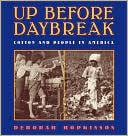Category Books
- Fiction Books & Literature
- Graphic Novels
- Horror
- Mystery & Crime
- Poetry
- Romance Books
- Science Fiction & Fantasy
- Thrillers
- Westerns
- Ages 0-2
- Ages 3-5
- Ages 6-8
- Ages 9-12
- Teens
- Children's Books
- African Americans
- Antiques & Collectibles
- Art, Architecture & Photography
- Bibles & Bible Studies
- Biography
- Business Books
- Christianity
- Computer Books & Technology Books
- Cookbooks, Food & Wine
- Crafts & Hobbies Books
- Education & Teaching
- Engineering
- Entertainment
- Foreign Languages
- Game Books
- Gay & Lesbian
- Health Books, Diet & Fitness Books
- History
- Home & Garden
- Humor Books
- Judaism & Judaica
- Law
- Medical Books
- New Age & Spirituality
- Nonfiction
- Parenting & Family
- Pets
- Philosophy
- Political Books & Current Events Books
- Psychology & Psychotherapy
- Reference
- Religion Books
- Science & Nature
- Self Improvement
- Sex & Relationships
- Social Sciences
- Sports & Adventure
- Study Guides & Test Prep
- Travel
- True Crime
- Weddings
- Women's Studies
Up before Daybreak: Cotton and People in America »

Authors: Deborah Hopkinson
ISBN-13: 9780439639019, ISBN-10: 0439639018
Format: Hardcover
Publisher: Scholastic, Inc.
Date Published: April 2006
Edition: (Non-applicable)
Author Biography: Deborah Hopkinson
Book Synopsis
In UP BEFORE DAYBREAK, acclaimed author Deborah Hopkinson captures the voices of the forgotten men, women, and children who worked in the cotton industry in America over the centuries. The voices of the slaves who toiled in the fields in the South, the poor sharecroppers who barely got by, and the girls who gave their lives to the New England mills spring to life through oral histories, archival photos, and Hopkinson's engaging narrative prose style. These stories are amazing and often heartbreaking, and they are imbedded deep in our nation's history.
Kevin Beach - VOYA
Cotton came to the New World in 1607 with the first colonists and soon became a vital export crop. Cultivating and processing cotton was work intensive, however. The need for a cheap labor force was filled by increasing the flow of slave labor into America. This thoughtful work examines the lives of slaves who toiled from before dawn until after dusk in hot fields. Inventions like the cotton gin and their impact on the industry are also evaluated. Following chapters describe how post-Civil War sharecroppers continued to live in ex-slave quarters and scraped to get by, raising their own cotton crops and overpaying often-cruel landlords. Many children still worked the fields rather than playing or attending school. Meager diets of pork fat and flour led to prevalent malnourishment and disease. Also covered is the mill industry of the northern states where children were equally overworked. Girls spent the day at looms creating cloth or sewing in hot, oppressive factory buildings. Called "lintheads," they often faced taunts from other children. Generations of families could not escape this cycle of poverty. The boll weevil, droughts, the Great Depression, and technology eventually brought the era of handpicked and cultivated cotton to a close. The last chapter reminds the reader that children still work in fields and factories all over the world because of cotton. The author, renowned for writing juvenile historical fiction, incorporates poignant oral histories and powerful photographs to illustrate the human toll that the cotton plant has wrought. Her work here is highly recommended. VOYA CODES: 4Q 2P M J (Better than most, marred only by occasional lapses; For the YA with a specialinterest in the subject; Middle School, defined as grades 6 to 8; Junior High, defined as grades 7 to 9). 2006, Scholastic, 128p.; Index. Photos. Biblio. Source Notes. Further Reading., Ages 11 to 15.
Table of Contents
Subjects
 See All Subjects
See All Subjects  Art & Architecture
Art & ArchitectureAges 9-12
 See All Subjects
See All Subjects  Nature
NatureAfrican Americans
 African American History
African American History  Slave Narratives & Biographies
Slave Narratives & BiographiesBiography
 Historical Biographies
Historical Biographies  Historical Biography - United States
Historical Biography - United StatesBiography
 All Biography
All Biography  General & Miscellaneous Biography
General & Miscellaneous BiographyBiography
 All Biography
All Biography  Historical Biography
Historical BiographyBusiness Books
 Business History
Business History  Agricultural Industries - History
Agricultural Industries - HistoryHistory
 African American History
African American History  African American History
African American HistoryHistory
 American History
American History  United States History - African American History
United States History - African American HistoryHistory
 American History
American History  United States History - General & Miscellaneous
United States History - General & MiscellaneousHistory
 Historical Biographies
Historical Biographies  Historical Biography - United States
Historical Biography - United StatesNonfiction
 Social Sciences
Social Sciences  General & Miscellaneous
General & MiscellaneousScience & Nature
 Social Sciences
Social Sciences  General & Miscellaneous
General & MiscellaneousNonfiction
 Biography
Biography  Historical Biographies
Historical BiographiesNonfiction
 Biography
Biography  All Biography
All BiographyNonfiction
 History
History  African American History
African American HistoryNonfiction
 History
History  American History
American HistoryNonfiction
 History
History  Historical Biographies
Historical Biographies
